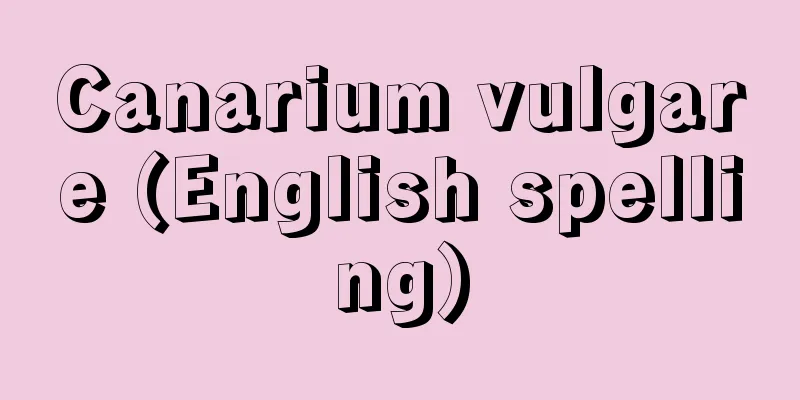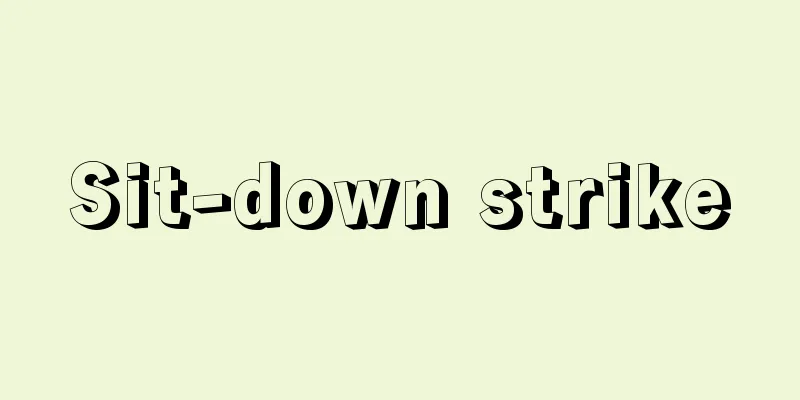Direct current - chokuryu (English spelling)

|
A current whose direction does not change over time. An abbreviation for direct current. Often abbreviated as DC. Generally, it refers to a state in which both the direction and magnitude are constant. In such cases, a state in which the direction of the current does not change but the magnitude changes is called a pulsating current to distinguish it from the current. The word direct current is also used as an adjective. For example, a voltage whose polarity (+/-) does not change, such as the voltage of a battery, is called a direct current voltage. Electricity was first put to practical use with the invention of a battery that could generate direct current voltage. However, because the voltage of each battery was only about 2 volts, many batteries had to be connected in series to obtain a high voltage, and the volume of the battery had to be large to obtain a large current, and it also had other drawbacks such as a short lifespan. Later, when the direct current generator was invented, these drawbacks were eliminated, and there was a period when direct current was widely used for electric lighting and power sources. On the other hand, because the voltage of alternating current can be easily converted using a transformer, the use of alternating current gradually became more common. Furthermore, three-phase alternating current was put to practical use, and alternating current became the main energy source for electricity. Currently, because it is easy to transform (convert voltage), alternating current is used for power generation, transmission, and distribution, and is converted to direct current by semiconductor circuits just before the equipment needs the direct current. DC transmission also has some advantages over alternating current, such as no voltage drop due to reactance. [Madashi Fuse and Masazumi Yoshizawa] [Reference items] | | | |Source: Shogakukan Encyclopedia Nipponica About Encyclopedia Nipponica Information | Legend |
|
時間の経過とともに流れる向きが変わらない電流をいう。直流電流の略。DCと略される場合が多い。一般に、向きと同時に大きさも一定の状態をさす場合が多く、そのときは、電流の向きは変わらず大きさが変わる状態を脈流といい区別する。直流という語は形容詞としても使用される。たとえば電池の電圧のように、極性(+-)が変わらない電圧を直流電圧という。 電気が初めて実用化されたのは、直流電圧を発生する電池の発明によっている。しかし電池は、1個当りの電圧がたかだか2ボルト程度であったため、高電圧を得るためには多数の電池を直列に接続しなければならず、また、大電流を得るためには電池の容積を大きくしなければならないうえ、寿命が短いなどの欠点をもっていた。のち直流発電機が発明されてからは、これらの欠点が除かれ、電灯や動力源として直流が広く使われた時期があった。一方、交流は変圧器を使って電圧を容易に変換できるため、しだいに交流の利用が盛んになった。さらに三相交流が実用化されて、エネルギー源としての電気の利用は、交流が主力になった。現在、変圧(電圧の変換)が容易なため、発電、送配電には交流を用い、機器内の直流を必要とする直前で半導体回路により直流に変換している。なお、直流送電ではリアクタンスによる電圧降下がないなどの、交流よりも優れた点もある。 [布施 正・吉澤昌純] [参照項目] | | | |出典 小学館 日本大百科全書(ニッポニカ)日本大百科全書(ニッポニカ)について 情報 | 凡例 |
Recommend
Gensuke Kiyohara
A poet of the mid-Heian period. He was the grands...
One-man sumo - Hitorizumo
1. The act of one person performing the movements ...
Tilden, Samuel Jones
Born: February 9, 1814, New Lebanon, New York [Die...
Quelimane
…In the 18th century, many Africans were sent as ...
Now board [Hot spring] - Imaita
...The Gozu Mountain Range has been designated as...
Arima Kei
1916-1988 A microbiologist from the Showa era. Bo...
Master Akaku
⇒Annen Source: Kodansha Digital Japanese Name Dict...
Achilleus Tatios
A Greek novelist active around the 2nd century. Da...
Orphan of the Storm - Stormbringer
...The plan to remake "Fading Flowers" ...
Aside - Bouhaku (English spelling)
A type of dialogue in a play, a special type of mo...
Inaba Yakushi - Inaba Yakushi
This is the common name for Byodo-ji Temple, a Shi...
Bunting
Canadian physiologist. He initially studied theol...
Asahi Sadaemon Shigeaki - Asahi Sadaemon Shigeaki
…diary. Written by Shigeaki Asahi Sadaemon. 37 bo...
Incense ceremony
It is a branch of aesthetic education that aims t...
Nephrops norvegicus (English spelling)
…It is edible. The European lobster Nephrops norv...









